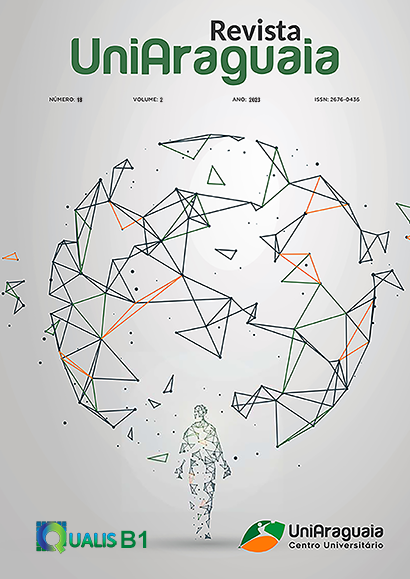NIRS ESTIMATION OF THE NUTRITIVE VALUE OF UROCHLOA sp. (SYN. BRACHIARIA sp.) FORAGES
Palavras-chave:
age, cultivars, crude protein, indigestible neutral detergent fiber, near-infrared spectroscopyResumo
The pasture-based production system is the most economical for cattle feeding, which is why new cultivars of Urochloa sp. (syn. Brachiaria sp.) are being released in Brazil. However, the method of analyzing the chemical composition of forages in the laboratory is time-consuming and costly. As an alternative, the near-infrared spectroscopy (NIRS) method emerges, which is rapid and non-polluting, as it does not use chemical reagents in the analyses. The aim was to evaluate the nutritive value estimation of Urochloa sp. forages using near-infrared spectroscopy (NIRS). The experimental design was completely randomized with four replications. The treatments were arranged in split-plot arrangement, consisting of eight species/cultivars of Urochloa sp. in the main plot (U. decumbens cv. Basilisk; U. humidicola cv. Tupi, U. brizantha cultivars Piatã, Xaraés, MG-5 Vitória, MG-13 Braúna; U. hibrida cultivars Ipyporã and Mavuno) and four harvesting ages in the subplots (30, 60, 90, and 120 days). The contents of dry matter (DM), crude protein (CP), neutral detergent fiber (NDF), acid detergent fiber (ADF), ash, and indigestible neutral detergent fiber (iNDF) were evaluated. With advancing age, there is an increase in the contents of DM, NDF, ADF, and iNDF, and a reduction in the contents of CP and ash in most evaluated cultivars. The nutritive value worsens with age, recommending grazing of cattle at an age below 60 days for most cultivars. The Ipyporã grass, an interspecific hybrid of U. ruziziensis and U. brizantha, presents good nutritive value as it advances in age, making it an option for diversification and deferred grazing. The NIRS estimates are excellent (R2cv > 0.95) for CP and ash, demonstrating the potential of this technology for rapid analysis of the nutritive value of Urochloa sp. forages and offering a fast and cost-effective service to ranchers.
Downloads
Publicado
Edição
Seção
Licença
O autor pode ainda, imprimir e distribuir cópias do seu artigo, desde que mencione que os direitos pertencem a REVISTA UNIARAGUAIA.
Os direitos de autor incluem o direito de reproduzir na íntegra ou em parte por qualquer meio, distribuir o referido artigo, incluindo figuras e fotografias.
Ao submeterem originais à REVISTA UNIARAGUAIA, o(a) autor(a) ou autores manifestam concordância com os seguintes termos:
a) Autores mantém os direitos autorais e concedem à REVISTA UNIARAGUAIA o direito de primeira publicação, com o trabalho simultaneamente licenciado sob aLicença Creative Commons Attributionque permite o compartilhamento do trabalho com reconhecimento da autoria e publicação inicial nesta revista.
b) Autores têm autorização para assumir contratos adicionais separadamente, para distribuição não-exclusiva da versão do trabalho publicada nesta revista (ex.: publicar em repositório institucional ou como capítulo de livro), com reconhecimento de autoria e publicação inicial nesta revista.
c) Autores têm permissão e são estimulados a publicar e distribuir seu trabalho online (ex.: em repositórios institucionais ou na sua página pessoal) a qualquer ponto antes ou durante o processo editorial, já que isso pode gerar alterações produtivas, bem como aumentar o impacto e a citação do trabalho publicado

